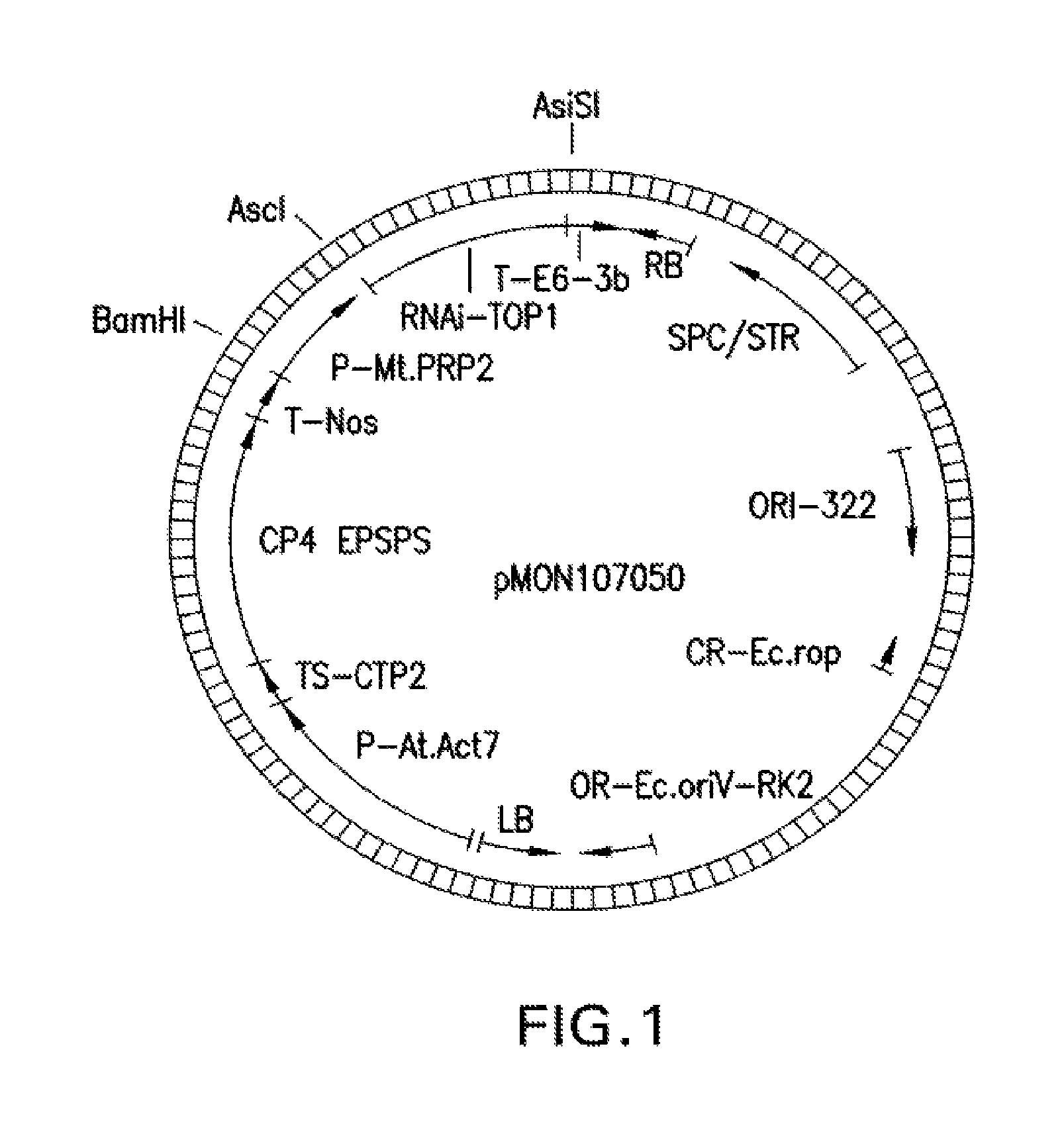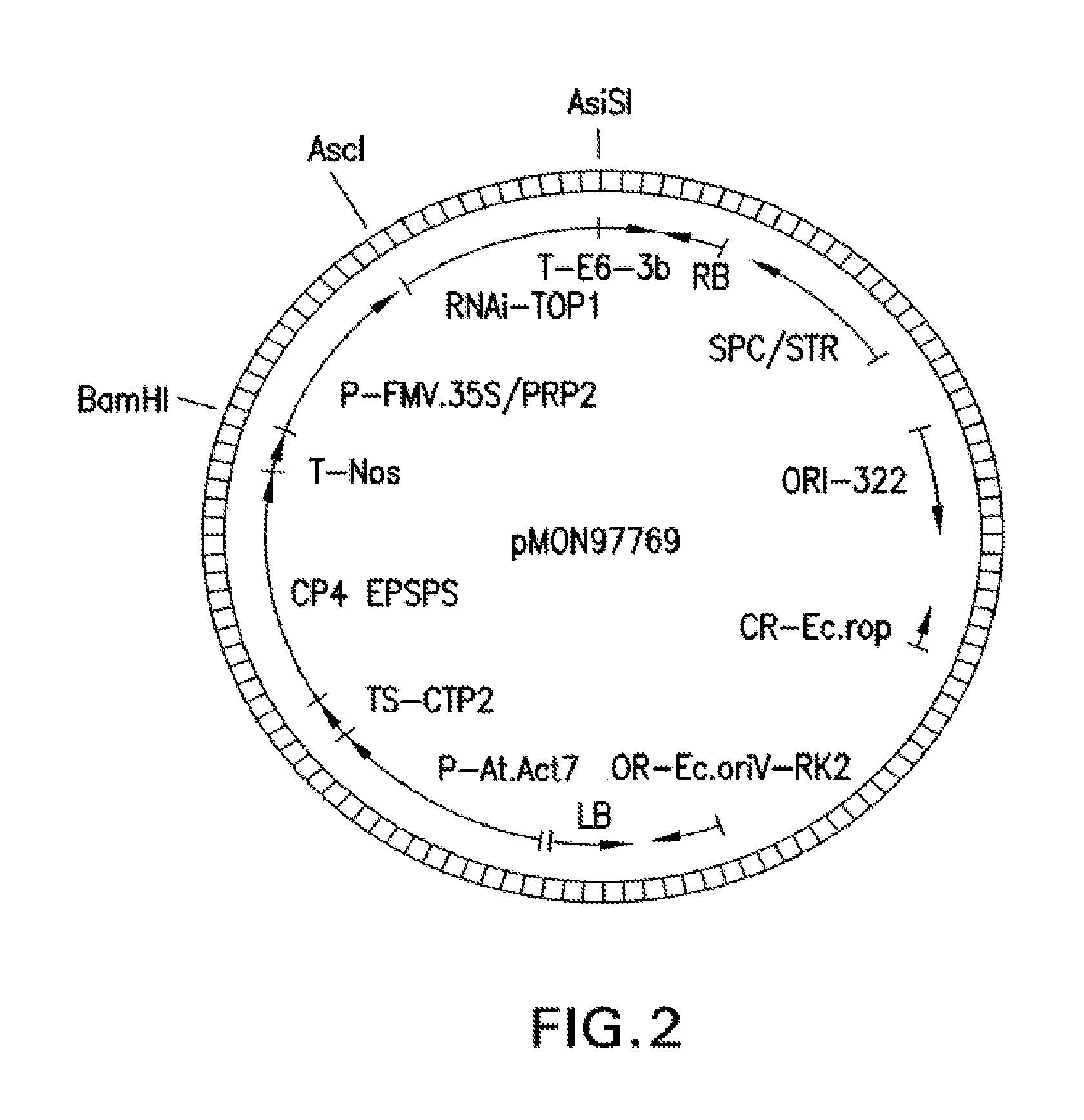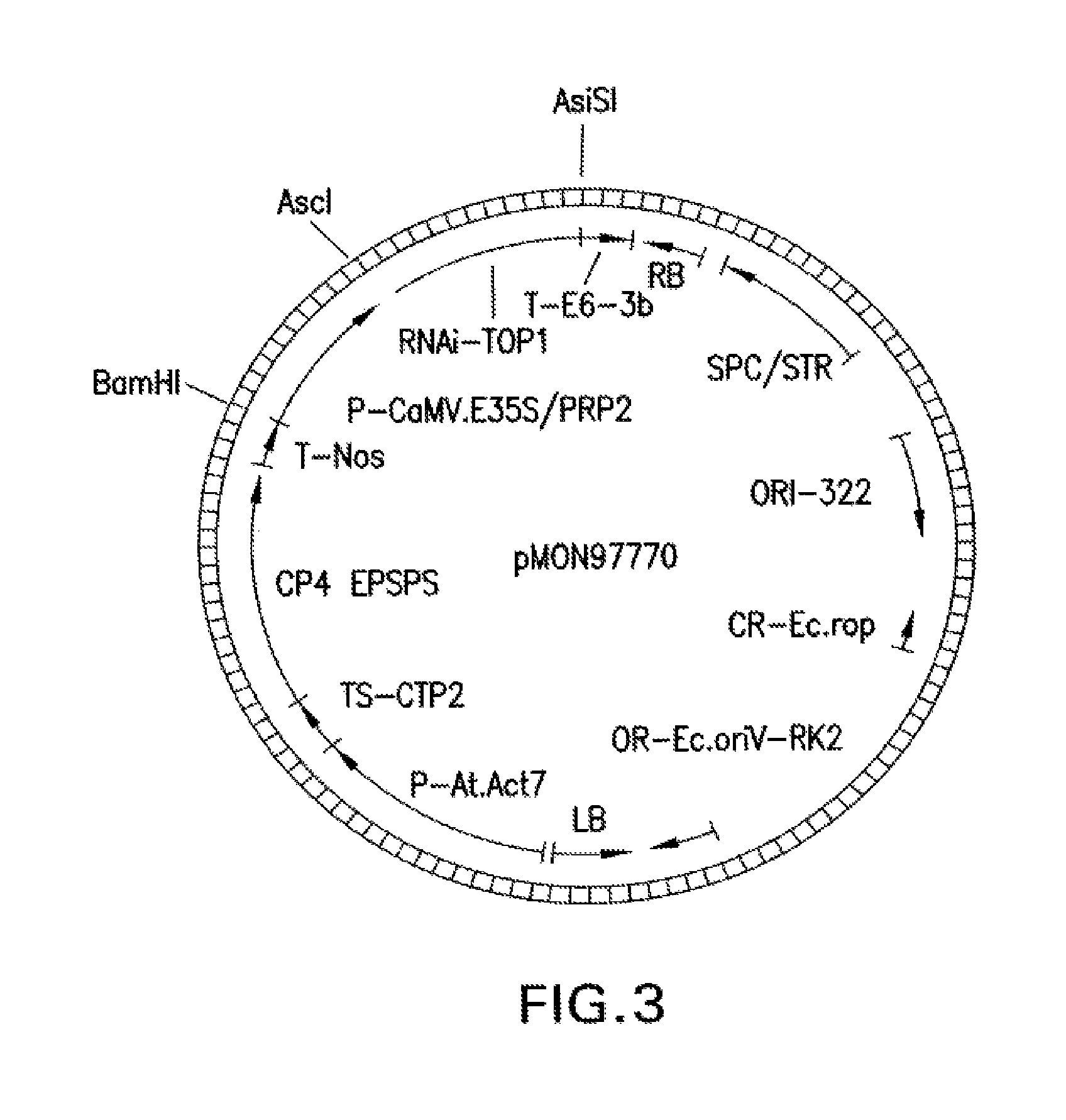Chimeric and proline rich protein promoters for expression in plants
a technology of plant genes and promoters, applied in the field of chimeric polynucleic acid molecules, can solve the problems of many previously identified regulatory elements not providing the patterns or levels of expression required to fully realize the benefits, and the genetic modification of plants and seeds is often restricted, so as to achieve high protein production, enhance animal properties, and high oil production
- Summary
- Abstract
- Description
- Claims
- Application Information
AI Technical Summary
Benefits of technology
Problems solved by technology
Method used
Image
Examples
example 1
[0116]This example provides descriptions of compositions in use or contemplated for use in the present invention singularly or in any combination.
[0117]The present invention provides polynucleotide molecules having promoter activity and DNA constructs comprising the promoter molecules operably linked to a transcribable polynucleotide molecule. A crop transformation base vector comprising selection expression cassettes and elements necessary for the maintenance of the plasmid in a bacteria cell is used to assemble DNA segments (promoters, leaders, introns, 3′UTR) that provide regulatory activity when operably linked to DNA segments that provide functionality in the present invention. The assembly of these DNA segments can be accomplished using methods known in the art of recombinant DNA technology. The exemplary DNA chimeric promoter molecules of the present invention, such as any one or more of the DNA molecules identified as SEQ ID NO: 19-27 or variants thereof, are assembled from ...
example 2
[0123]This example illustrates expression analysis from MtPRP and viral enhanced MtPRP chimeric promoters in stable transformed soy plants.
[0124]The Agrobacterium-mediated soybean transformation to produce plants comprising the DNA constructs comprising the molecules of the present invention is based on the method described by Martinell et al., which allows the generation of germline transformed plants without utilization of callus (U.S. Pat. No. 6,384,301 and US2005-0005321-A1). Exemplary DNA constructs of the present invention include pMON107050 (short MtPrp / Top-1), pMON97769 (FMV35S-MtPrp / Top-1), pMON97770 (CaMV35S-MtPrp / Top-1), pMON59355 (long MtPrp / GUS), and pMON59354 (short MtPrp / GUS).
[0125]Briefly, meristem tissues are excised from the embryos of imbibed soybean A3525 or A3244 (Asgrow®) seed. After co-culturing with the Agrobacterium carrying the DNA construct, the meristems are placed on selection medium to inhibit the growth of untransformed plant cells and excess Agrobacte...
example 3
[0133]This example illustrates specific embodiments in which the promoters of the present invention are particularly useful.
[0134]A soybean cyst nematode (Heterodera glycines) plant greenhouse pot assay is used to evaluate the resistance of transgenic soybean plants expressing an SCN inhibitory nucleotide sequence to infection by and reproduction of the soybean cyst nematode on roots. Transgenic soybean plants were selected which express a dsRNA for suppression of an essential SCN gene encoding a topoisomerase, top1. Constructs designed to express the SCN inhibitory agent are set forth herein at pMON107050 (FIG. 1, P-MtPrp / Top1 / E6, SEQ ID NO:3, MtPrp promoter), pMON97769 (FIG. 2, P-FMV35S-MtPrp / Top1 / E6, SEQ ID NO:19, chimeric promoter), and pMON97770 (FIG. 3, P-CaMVe35S-MtPrp / Top1 / E6, SEQ ID NO:20, chimeric promoter). Three or four inch diameter square pots are filled with clean sand and watered thoroughly. Transgenic and control soybean seeds (A3525 or A3244, Asgrow®), or alternati...
PUM
| Property | Measurement | Unit |
|---|---|---|
| temperatures | aaaaa | aaaaa |
| volume | aaaaa | aaaaa |
| diameter | aaaaa | aaaaa |
Abstract
Description
Claims
Application Information
 Login to View More
Login to View More - R&D
- Intellectual Property
- Life Sciences
- Materials
- Tech Scout
- Unparalleled Data Quality
- Higher Quality Content
- 60% Fewer Hallucinations
Browse by: Latest US Patents, China's latest patents, Technical Efficacy Thesaurus, Application Domain, Technology Topic, Popular Technical Reports.
© 2025 PatSnap. All rights reserved.Legal|Privacy policy|Modern Slavery Act Transparency Statement|Sitemap|About US| Contact US: help@patsnap.com



